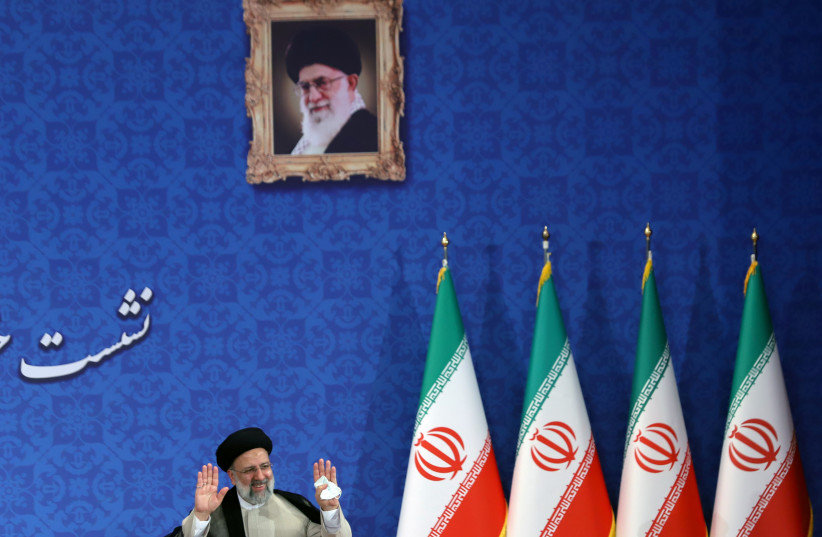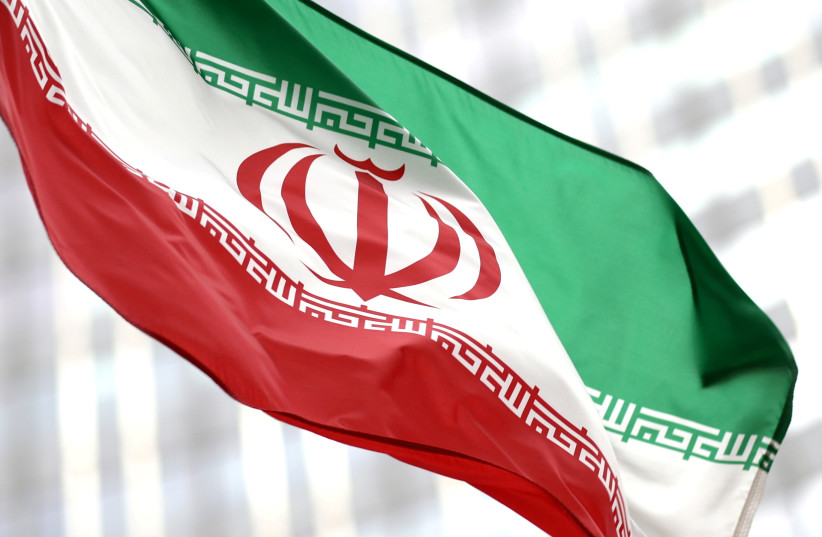by Yonah Jeremy Bob
Since his election in June, some have mythologized President Ebrahim Raisi as an immovable object. But then he moved.
 |
Iran's President-elect Ebrahim Raisi gestures at a news conference in Tehran, Iran June 21, 2021.
(photo credit: MAJID ASGARIPOUR/WANA (WEST ASIA NEWS AGENCY) VIA REUTERS)
|
It could be meaningless.
Iran’s announced deal with the IAEA
on Wednesday only gets rid of one of its many blatant violations of
nuclear inspectors’ access and does not provide obligatory answers to
unresolved questions or stop its continued hovering around the
weaponized uranium threshold.
But it does build a case that Iranian President Ebrahim Raisi can be handled and blinks like other Iranian leaders and human beings when faced with stark choices.
For
months and even within 24 hours before Raisi and Iran gave in on
restoring IAEA camera-monitoring of nuclear facilities, the Islamic
Republic maintained that it would not move an inch.
Until it did.
 Iranian
flag flies in front of the UN office building, housing IAEA
headquarters, amid the coronavirus disease (COVID-19) pandemic, in
Vienna, Austria, May 24, 2021. (credit: LISI NIESNER/ REUTERS)
Iranian
flag flies in front of the UN office building, housing IAEA
headquarters, amid the coronavirus disease (COVID-19) pandemic, in
Vienna, Austria, May 24, 2021. (credit: LISI NIESNER/ REUTERS)Since his election in June, some have mythologized Raisi as an immovable object.
He
ignored all calls to negotiate and all threats for around half-a-year,
moving closer to the uranium enrichment threshold that would permit
development of nuclear weapons than any previous Iranian leader.
When
his new negotiating team arrived, they wasted two weeks, having ripped
up all the prior understandings reached during six rounds of talks
between April-June with the prior administration of Hassan Rouhani.
The idea of Rouhani making deadlines, but then flinching was not new, but was rather well-established.
But this is the first chink in Raisi’s impregnable armor of stonewalling.
The
question is what does this mean for the future of nuclear negotiations,
and more broadly, whether the West will stop Tehran from developing
nuclear weapons.
The answer could be broken down into the short, medium and long-term.
In
the short-term, Raisi’s backing down clearly came from a US threat to
get the IAEA Board of Governors to condemn Iran by the end of December
if no deal to restore the inspectors’ camera monitoring was struck.
This
follows a similar pattern by Iran after the IAEA Board condemned it on
June 19, 2020 – the only time the Islamic Republic had been condemned
since before the 2015 JCPOA nuclear deal.
That
condemnation gave the Mossad cover, according to Iran and foreign
sources, to destroy the Islamic Republic’s above ground Natanz nuclear
facility on July 2, 2020 and for some other disruption operations which
caused explosions in various facilities.
By August 2020, Iran Supreme Leader Ayatollah Ali Khamenei and
Rouhani had granted the IAEA access to multiple disputed sites for which
its access requests had been ignored for around a year.
Whether
Khamenei and Raisi were worried about losing diplomatic ground or a
post IAEA-condemnation move by the Mossad, the threat was serious enough
to get them to reenter broader nuclear talks with the world powers and
to restore IAEA camera access.
In the medium term, this may also signal more flexibility in returning to aspects of the JCPOA’s nuclear limits.
It
is hard to see strategically what Raisi would hope to achieve by a
technical deal with the IAEA without an eventual deal with the world
powers.
If that is
true, all of the six months of Raisi’s posturing would just have been
about seeing if the US might concede something new, or at least getting
it to drop its talk of follow-on negotiations to strengthen and lengthen
the JCPOA.
So the
US and the West may also record a victory over Raisi in the medium
term, getting Iran to agree to a return to some nuclear limits sometime
in 2022.
But the key question is still the long-term.
When
the JCPOA was signed, the first major sunset expiration of nuclear
limits in 2025 was 10 years away. Now it is only three years away. What
happens then? What if the new deal allows Iran to keep its new advanced
centrifuges in storage?
What
is worse, multiple Israeli security officials both with left and
right-wing politics worry that part of Iran’s strategy the last six
months was to enrich enough uranium up to 60% so that it could conceal
enough to make a nuclear bomb on the side before returning to a deal.
These
officials have pointed out that concealing 60% uranium and enriching it
up to 90% is much easier and faster because the volume of material and
number of centrifuges required is much smaller than at lower enrichment
levels.
As the US
breathes a sigh of relief that it does not yet need to go into a broader
conflict with Iran, these long-term questions will remain on the minds
of Israel’s security establishment.
Yonah Jeremy Bob
Source: https://www.jpost.com/middle-east/iran-news/like-khamenei-rouhani-irans-raisi-blinks-under-threat-analysis-688951
No comments:
Post a Comment